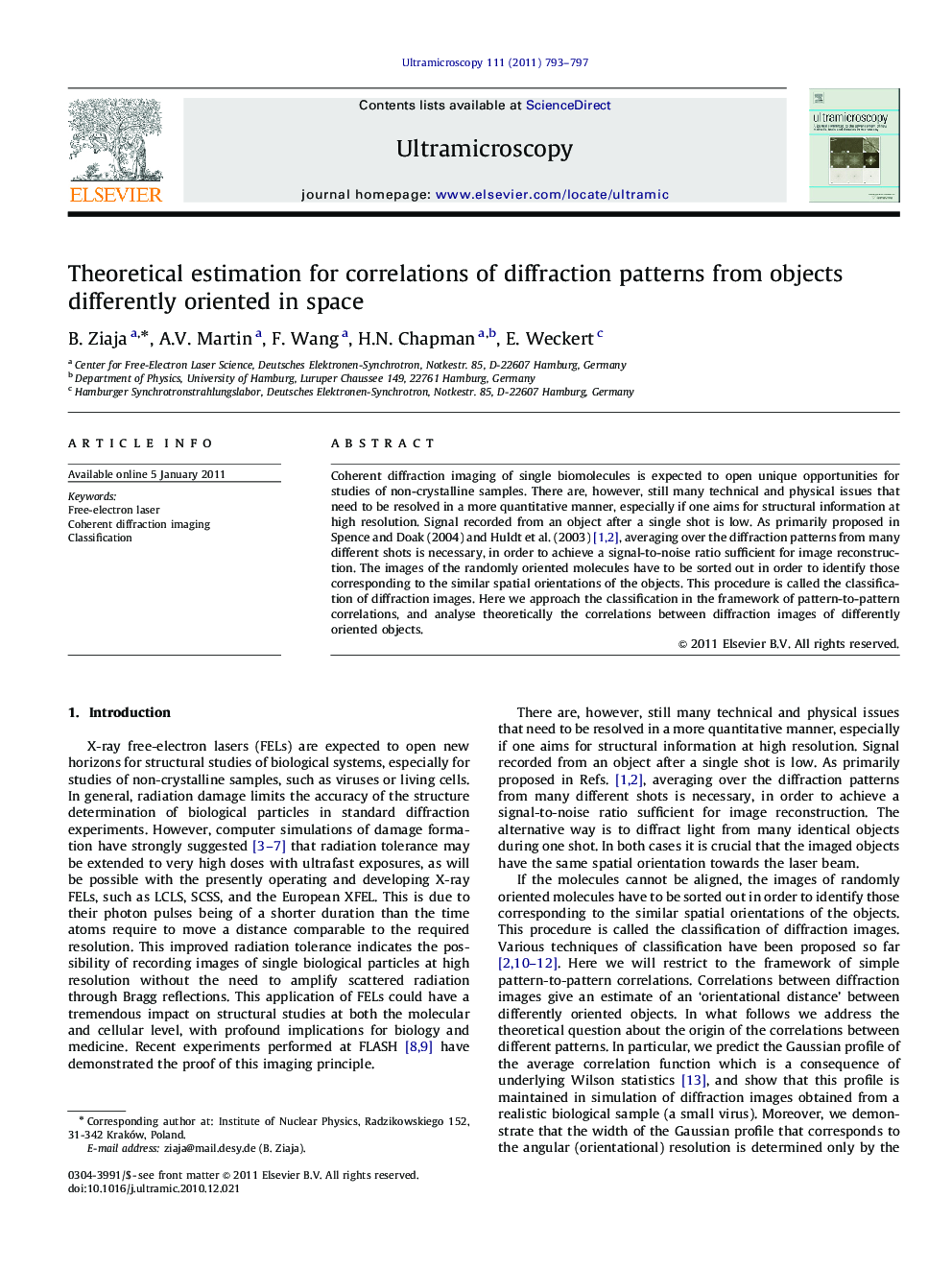| Article ID | Journal | Published Year | Pages | File Type |
|---|---|---|---|---|
| 1677872 | Ultramicroscopy | 2011 | 5 Pages |
Coherent diffraction imaging of single biomolecules is expected to open unique opportunities for studies of non-crystalline samples. There are, however, still many technical and physical issues that need to be resolved in a more quantitative manner, especially if one aims for structural information at high resolution. Signal recorded from an object after a single shot is low. As primarily proposed in Spence and Doak (2004) and Huldt et al. (2003) [1] and [2], averaging over the diffraction patterns from many different shots is necessary, in order to achieve a signal-to-noise ratio sufficient for image reconstruction. The images of the randomly oriented molecules have to be sorted out in order to identify those corresponding to the similar spatial orientations of the objects. This procedure is called the classification of diffraction images. Here we approach the classification in the framework of pattern-to-pattern correlations, and analyse theoretically the correlations between diffraction images of differently oriented objects.
Research highlights► We studied correlations between diffraction images from objects differently oriented in space. ► We demonstrated that the limiting orientational resolution is determined only by the virus structure. ► It is unaffected by a random water layer surrounding the virus or a Poissonian noise. ► The classification of diffraction images is not perturbed much by these effects, and still possible.
